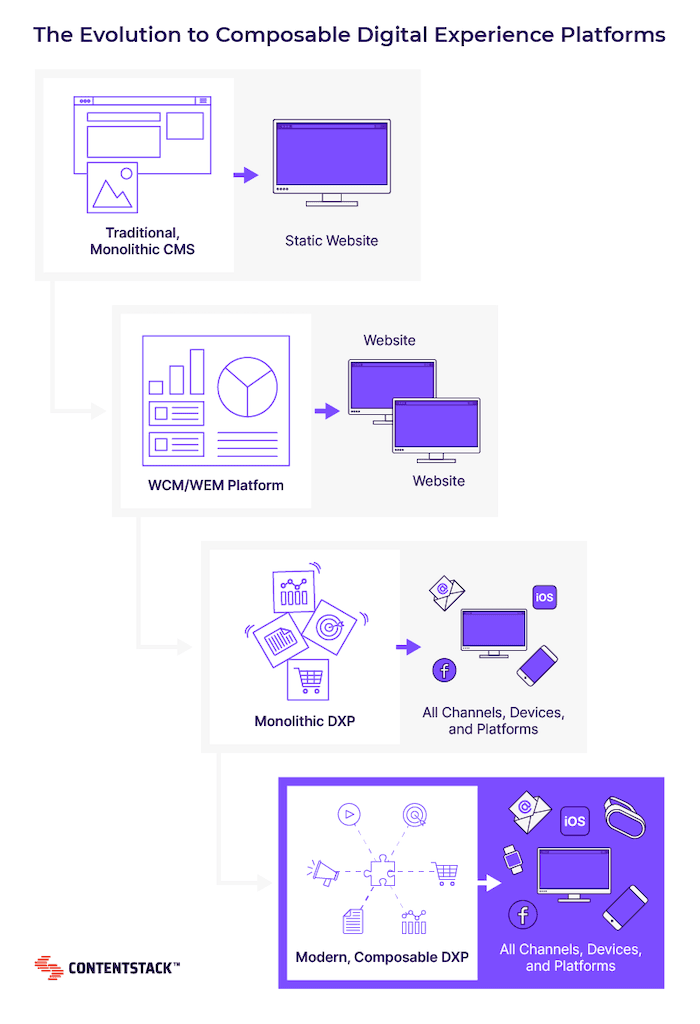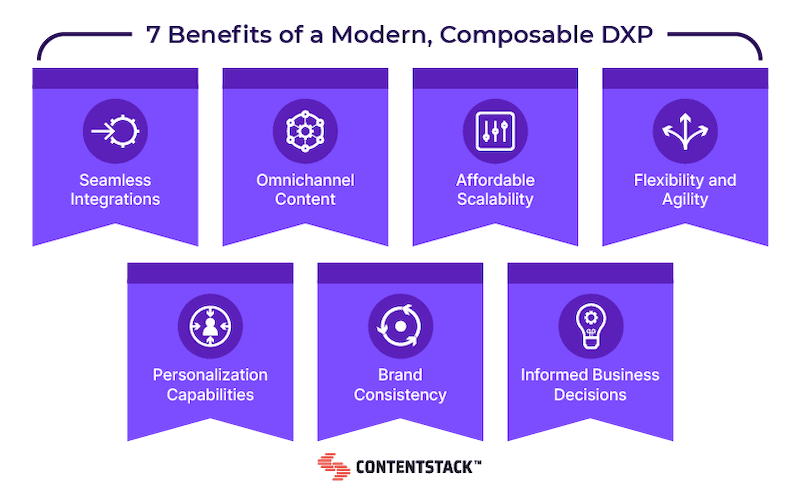
5 Key Aspects of a Modern DXP
WEB DEVELOPMENT, TECHNOLOGY OF EXPERIENCE.Companies engaged in digital commerce must create great experiences for their customers, but they must also formalize and automate the way they do it, because digital experiences are the future of marketing.
Because of this, many companies are moving to a Digital Experience Platform (DXP) to create robust, content-driven experiences for consumers. Gartner defines DXP as:
"A DXP is a well-integrated set of related technologies designed to create, manage and optimize context-aware digital experiences through rich customer experience journeys."
That is, a modern DXP provides the architecture and modular services that articulate the capabilities of various applications to deliver consistent digital experiences.

Ibexa's DXP is an example of a modern DXP, helping companies address digital transformation in commerce with new commerce strategies and create remarkable digital experiences for consumers across all channels. According to Ibexa, a modern DXP should contemplate the following 5 key aspects:
1. Content management
Each customer journey needs to have content that is relevant and consistent with each phase of that journey. To this end, a modern DXP must offer:
Structured content: By structuring the content, semantic relationships can be created between the different content segments, making it easier for customers to find what they are looking for or to discover useful information that they would not otherwise have seen.
Permissions and workflows: With an architecture based on user profiles, the content administrator will be able to define permissions to reach certain content or to perform some action, such as creating, downloading, modifying or deleting content. The DXP should offer out-of-the-box workflows and allow the creation of customized workflows to meet different requirements.
Multilingual and multi-site content: By creating a standard content structure, publishers can easily build and maintain different digital domains, making it much easier to manage content across multiple languages and sites.
Multichannel content: A traditional CMS provides a single context for presenting content, usually a web page. With a "headless" DXP, content is not connected to a particular channel, but is delivered to multiple channels through an API, resulting in greater flexibility, easier scaling and greater security.
2. Web Management
Create a new website with a few clicks: Modern DXP should simplify the way the marketing team creates and manages their multi-brand websites.
DXP Ibexa's Site Factory module offers intuitive and easy-to-use templates. It can handle translations across multiple sites and reuse both content and tools throughout the web environment. It allows:
Build new pages quickly: The visual "drag and drop" of the Page Builder tool, integrated into DXP Ibexa, allows you to build remarkable pages, providing rapid response to product and market development.
Manage web pages in no time: With the Page Builder tool, DXP Ibexa can generate content quickly, with ready-to-use content blocks, simple editing and the ability to create custom content for new sites.
Build forms with native tools: With Form Builder Ibexa you can easily create forms, as it is a native functionality of the Page Builder tool.
Leverage SEO (Search Engine Optimization): DXP Ibexa quickly implements complex SEO and social media content strategies across all sites and languages, automatically generating metadata and images for social media SEO.
3. Customization
It is crucial that the customer experience is personalized, because all people are very different from each other, and no two businesses are the same.
Personalize to the target customer: Customer preferences should be captured to deliver highly relevant content and recommendations, presenting specific products or content based on the user's geographic region, IP address, browser or device.
Thus, publishers can explicitly define which content or products to show to which group of users, which is implicit personalization.
Tracking customer behavior, based on data: User behavior can be tracked (web pages visited, products purchased or viewed, links clicked, topics searched) in order to define certain scenarios that can automatically identify the most relevant content for each customer.
This explicit personalization can really drive sales. For example, by offering personalized recommendations to customers in the checkout process.
4. Digital Commerce
A future-ready e-commerce platform must be native to the DXP, to:
Meeting the needs of modern buyers:The B2B (Business-to-Business) sales model has specific requirements that go beyond B2C (Business-to-Consumer) workflows, with buying scenarios that vary across industries. Therefore, a modern DXP must:
• Support customized order list templates.
• Offer customized or segmented pricing.
• To have multi-brand, multi-store and multi-channel digital commerce.
• Support user management to define different permissions and purchasing roles within companies.
• Have customized shopping paths for different user permissions.
Combining B2B and B2C commerce on a single platform: The platform must be powerful and extensible enough to provide digital commerce capabilities to partners, distributors and resellers. It must be composable and flexible to provide a multi-brand, multi-channel digital commerce experience.
Centralize all product information: A unified solution is needed to manage all product information, from highly structured and defined product specifications to rich content.
To achieve this, the DXP must be able to integrate with the PIM system. Ibexa's DXP has the ability to store all product information on the platform, replacing the PIM.

5. Development
You want your own experience with the DXP to be as seamless as that of customers using online sales channels.
Ibexa's DXP is based on Symfony open source technologies, benefiting from its diverse toolset and the large group of developers capable of using it.
Another key aspect of development is the cloud. Ibexa Cloud acts as a layer between the cloud service and the application, taking full advantage of the flexibility and scalability of modern cloud-promoted web development. The Ibexa DXP enables:
Accelerate digital projects: Ibexa Cloud is a cloud hosting platform, which allows the development team to work more efficiently. By having the infrastructure and back-end services optimized, the development team can deliver faster at every stage.
Optimize quality control: Ibexa Cloud provides greater capacity for test and development environments to agilely build high quality solutions,
Focus on creating value for the business: Developer resources are freed from lower-value operational tasks that are necessary to maintain the backend infrastructure.
Contact Us
Aplyca has been a partner of Ibexa for more than 15 years and we are currently a Platinum Partner of this platform.
We are experts in implementing solutions with this digital experience platform (DXP), which allows us to offer our clients tools to be more competitive and agile in their digital strategies. We invite you to contact us to discuss your business needs.